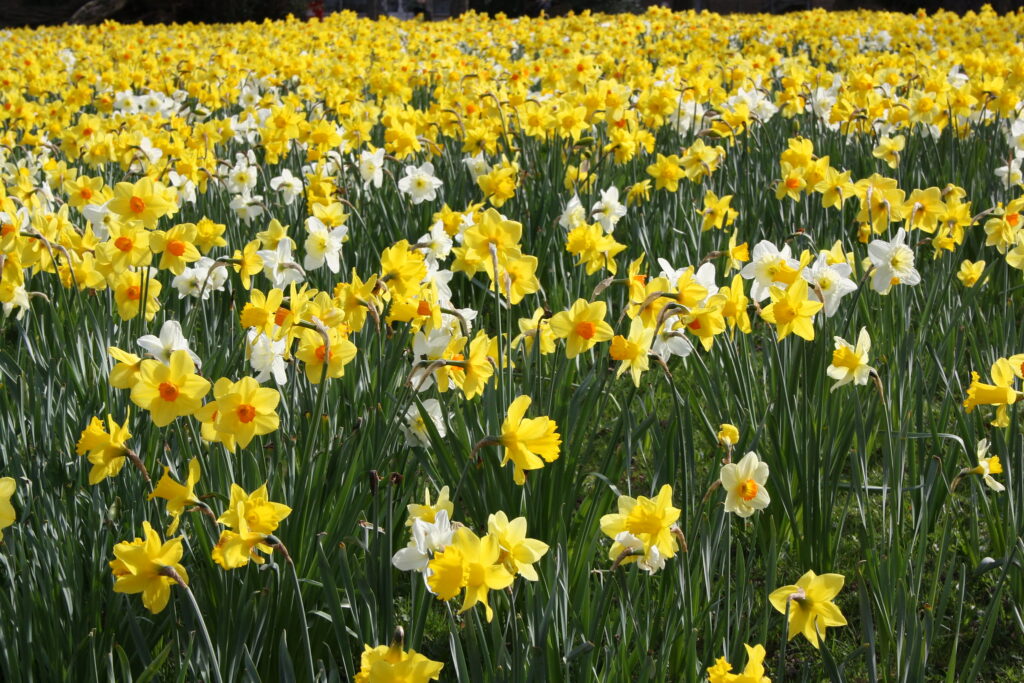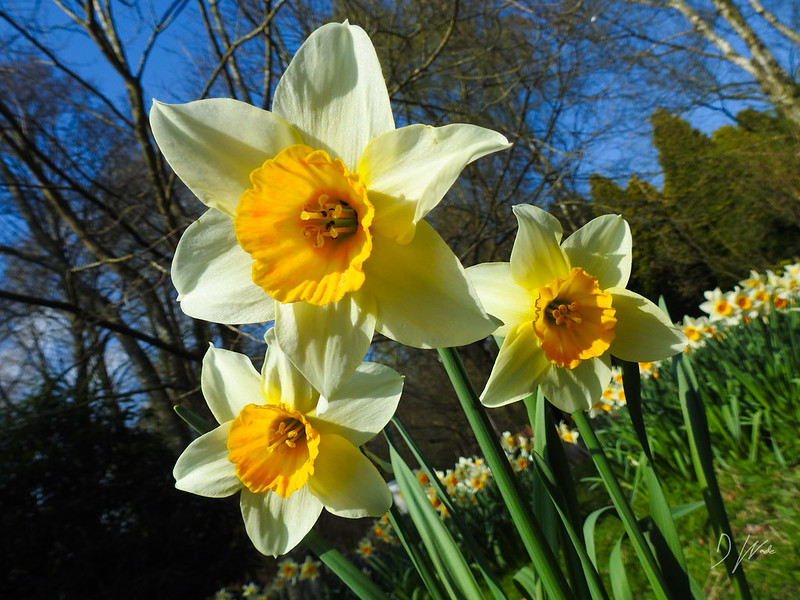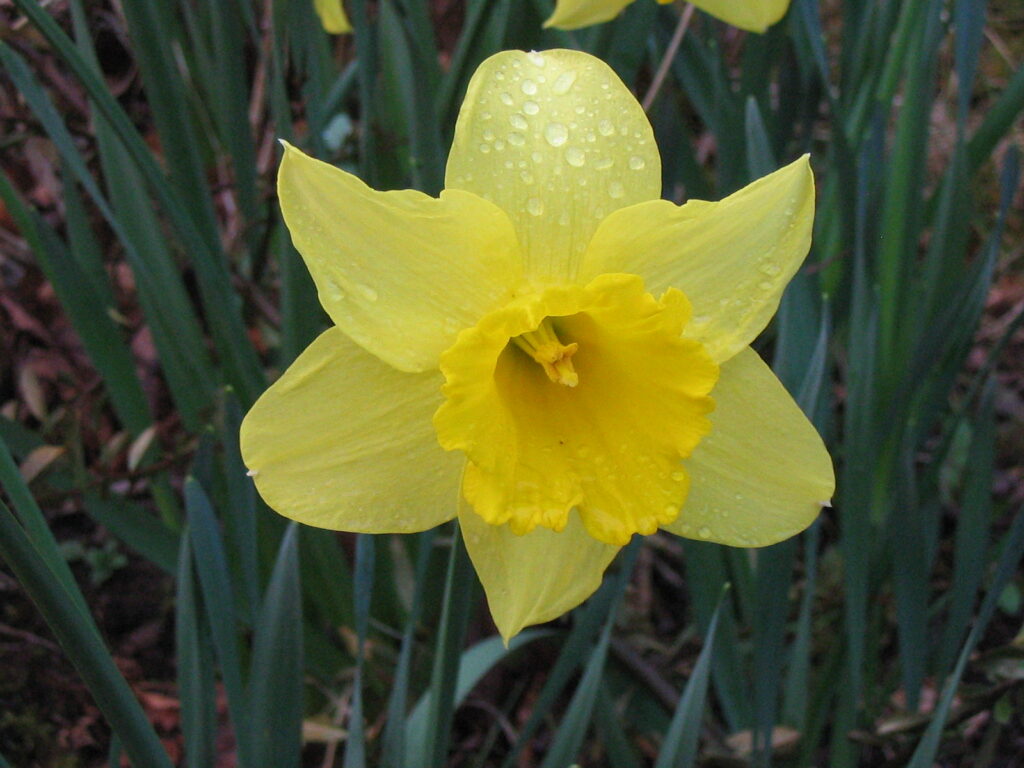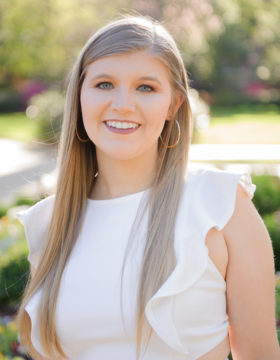Daffodils are bulb flowers. They are most often yellow, but there are varieties with white, pink, and orange flowers or combinations of these colors.
They originate from the Mediterranean region, especially Spain, Portugal, Italy, Greece, and North Africa. They spread themselves naturally through central Europe and today are treasured all over the world. They symbolize new beginnings and friendship. They were widely cultivated in Europe and were grown in North America by the 1700s or even earlier.

There are several main categories of daffodils. The American Daffodil Society classifies them as Trumpet, Large-Cupped, Small-Cupped, Split-cupped, Double Daffodils, Triandrus, Cyclamineus, Jonquilla, Tazetta, Poeticus, and some other hybrids and wild varieties. The Trumpet Daffodil is certainly the most recognized common type. Within each group of daffodils, there are many individual varieties and colors.
- Narcissus
- Perennial
- Full sun
- Fertile, well-drained slightly acidic soil (pH 6.0 to 7.0)
- Plant in the garden or in containers in the fall
- Plant 3-6″ apart in the garden.
- Growing in containers:
Start multiple bulbs in a large pot in the fall
Keep chilled until early spring
- Water new plants regularly, when the soil is dry. Keep well watered but don’t allow soggy soil.
- Climate Zones 3-8
Planting Daffodils
Plant daffodil bulbs directly in the garden in the fall, often in late September or October is best. These plants need cold stratification in order to be ready to bloom in the spring. Planting in the fall and allowing them to be chilled over the winter provides this in northern and colder climates, the Midwest, the Northwest, and the upper Southeast. They can grow fairly well in California, even in the southern areas of the state, but they need to be chilled before planting. Refrigerate the bulbs for four to six weeks, then plant them in December, and they should do fine. Some varieties that work well in warmer climates are Pink Charm, February Gold, and Campernell.

Good drainage is essential, so planting in raised beds or on a good steep slope is perfect. Full sun areas are best, but daffodils will often be fine in partial shade, though not full shade. They should be planted fairly deep, at least twice as deep as the height of the bulb. The pointed end should point up. If you are in an area with cold winters or are planting in somewhat sandy soil, plant them a bit deeper. This will help protect them from the cold, or give them some more room to grow as needed.
Growing Daffodils
Daffodils are an easy-to-grow potted plant, but there are a few things to keep in mind when growing them in containers. Choose a variety that will grow well in pots, often the smaller miniature varieties are best. They should be large pots, at least 12 inches deep and 12 inches wide.
A square or round pot will hold about 8-9 bulbs, of the same variety. Also, the pots should have excellent drainage, this is especially important with all bulb flowers. It’s best to plant them in the fall, just like the garden flowers. They still need cold stratification, so the pot should be kept a bit cold, preferably in the 40’s °F, for 3 1/2 to four months, until the spring. A refrigerator is ideal for this.
Keep them watered, when the soil gets dry, but don’t overwater. Roots and sprouts will start during this period. Once the time has passed, move them to a warmer location (50’s or low 60’s °F) with direct sunlight. They will start blooming after a few weeks. If you can, after a year’s growth, transplant the bulbs to a garden in the fall, and start new bulbs for potted daffodils the next year. They will last about 3 years in the pot.
Good companions for daffodils are azaleas, rhododendron, tulips, and daylilies. I prefer to use rhododendrons, since these need a bit less sun. Also, the rhododendrons bloom all spring and summer and will be a good color complement to the daffodil blooms. They will still be flowering if early blooming daffodils start to fade in the late spring. All these plants are perennials, have similar nutrition requirements and growing conditions, and will not interfere with each other.

Daffodils, as perennials, don’t do well near annual veggies like tomatoes and peppers, or annual flowers. All of these need to be dug deeply when planting, which can be problematic near this bulb perennial. Taller plants close by are also not a good choice, as they could shade the daffodils too much.
Daffodil Pests and Diseases
There are a few pests that can become a problem. Slugs, snails, and nematodes are common. A few specific pests for bulb flowers are the bulb fly and bulb scale mites. Deer and rodents are not usually a problem since they won’t eat the bulbs, and it’s often said that dandelions are deer-proof. In my experience, deer will sometimes eat the flowers and leaves if they are not fenced in. There are a few viral diseases specific to daffodils, such as Narcissus white streak and Narcissus yellow stripe. Some more common ailments include Fusarium wilt, bulb rot, and gray mold. The best way to prevent these diseases is to ensure good drainage and make sure that the soil does not become soggy.
Harvesting Daffodils
When harvesting for a flower arrangement, pick the daffodils once they open. Cut the bottom of the stem off and put them into a vase by themselves, in water. Keep the vase in the dark for one day. After they have soaked for a day, remove the flowers and rinse off the stems thoroughly before trimming and combining them in a vase with other kinds of flowers. Daffodils produce sap from their stems which can damage other kinds of flowers, and soaking and rinsing will help prevent this.
Daffodil bulbs will naturally split when they are ready to be replanted. Once they are 4 or 5 years old, wait until the leaves begin to turn yellow. Carefully dig in late spring or early summer. Separate and clean the bulbs carefully and allow them to dry. Plant them where desired in the late fall, as already explained.
Though there are some careful steps to follow, this beautiful flower is not difficult to grow in the garden or in pots. They can add a lovely color variety to your garden or windowsill!

Contact Author
 info@gardensavvy.com
info@gardensavvy.com Recent Posts
- Smart Gardening: How Technology Is Revolutionizing Horticulture
- Understanding Gardening Zones: What You Need to Know
- The Right Tools For Your Gardening And Landscaping Needs
- Maximizing Your Harvest: Square Foot Gardening Chart for Beginners
- Holiday Garden Scents: Plants for Natural Aromatherapy in Your Home









